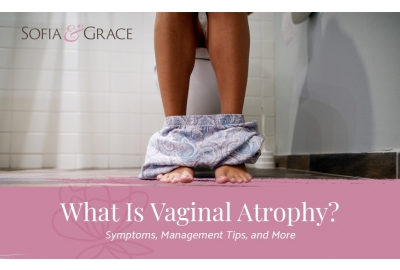
What Is Vaginal Atrophy? Symptoms, Management Tips, and More

As you age and menopause sets in, you might notice that your vagina becomes dry or itches, and that you start contracting more yeast infections and UTIs. Vaginal atrophy, sometimes more broadly referred to as genitourinary syndrome of menopause, is a relatively common side effect of menopause. In this guide, we explain what vaginal atrophy is, what its symptoms are, how it’s diagnosed and treated, and more.
What is vaginal atrophy?
Vaginal atrophy occurs when the lining of the vagina becomes drier and thinner. It can lead to symptoms of burning and itching, as well as urinary tract related problems. You may hear vaginal atrophy also referred to as genitourinary syndrome of menopause (GSM), a more inclusive term that incorporates both the vaginal and urinary symptoms. Vaginal atrophy is often caused by menopause and its accompanying hormonal changes. Vaginal atrophy is not the same as a yeast infection — though some of the symptoms are the same, the causes are different. Your doctor will work with you to determine if your symptoms are caused by a yeast infection or vaginal atrophy.
Understanding Menopause
Menopause occurs when women stop menstruating and officially starts 12 months after your last period. Menopause results in fluctuating levels of important hormones, such as estrogen and progesterone. These hormone fluctuations lead to many different symptoms, including hot flashes, weight gain, bone loss, and more. Menopause usually begins between the ages of 45 and 55 and it lasts for seven years on average, though it can take up to 14 years. In most cases, menopause is usually caused by natural aging, but it may also be triggered by the surgical removal of your ovaries or uterus.
Shop All Menopause Relief Products
Symptoms of vaginal atrophy
Vaginal dryness is usually the first symptom of vaginal atrophy, but there are many others to look for, including:
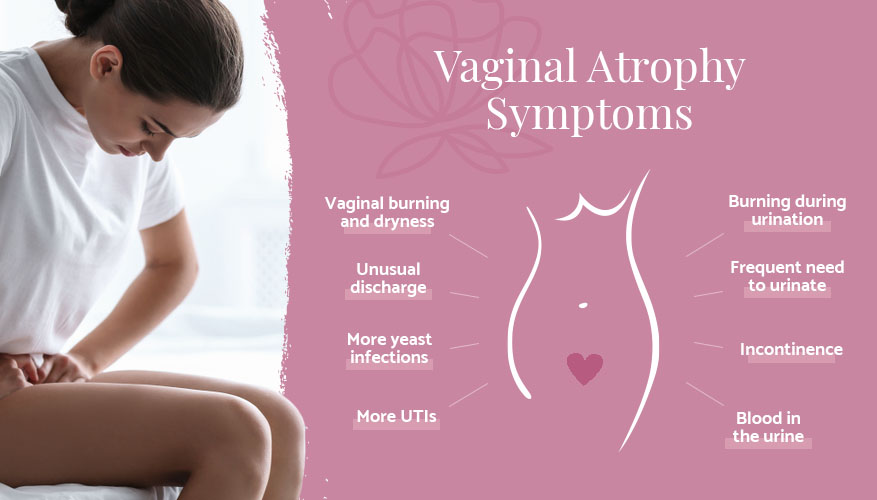
- Vaginal burning and dryness
- Itching sensation in the genital areas
- Unusual vaginal discharge
- More yeast infections
- More urinary tract infections (UTIs)
- Burning or painful sensation during urination
- Frequent need to urinate
- Incontinence (involuntary urine discharge)
- Blood in the urine
- Discomfort or dryness during sex that isn’t remedied by lubricant
- Bleeding during or after sex
- Creating less natural lubrication than usual during sex
Urinary symptoms are very common during vaginal atrophy, hence why more doctors are now calling it genitourinary syndrome of menopause. About 40 percent of people experience GSM after menopause.
Causes of vaginal atrophy
At its root, vaginal atrophy is caused by a drop in estrogen, which makes the tissues of the vaginal lining become thinner and drier. A drop in estrogen may be caused by many different factors, including:
- Menopause
- The year leading up to menopause (perimenopause)
- Surgical menopause, aka the removal of the ovaries
- Breastfeeding
- Medications that affect estrogen levels (including birth control pills)
- Pelvic radiation therapy for cancer
- Chemotherapy for cancer
- Breast cancer hormonal treatment
You may experience vaginal atrophy symptoms during perimenopause before your period completely ceases. You might also get it several years into menopause, or not experience it at all. Not everyone who goes through menopause will experience GSM, although it is rather common.
Complications with vaginal atrophy
While technically separate conditions, vaginal infections and urinary problems often accompany genitourinary syndrome of menopause. The vaginal infections occur because changes in the acid balance in the vagina make the areas more vulnerable to infections. The urinary problems may influence incontinence and UTIs and are caused by the urinary changes associated with GSM. If you are experiencing the symptoms listed above, it’s important to talk to your doctor so that they can work with you to determine whether your vaginal infections and urinary problems are caused by vaginal atrophy instead of something else.
Risk factors for vaginal atrophy
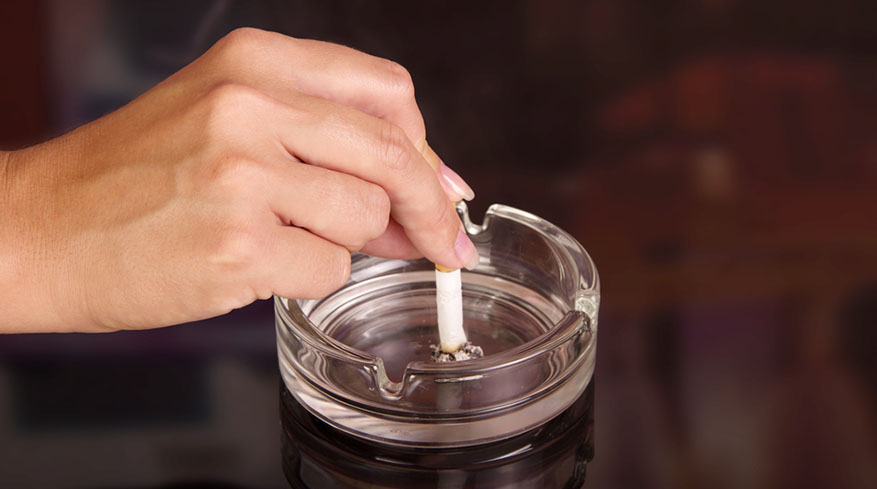
Some things can increase your likelihood of developing vaginal atrophy. For instance, smoking may lessen the flow of blood and oxygen to the vagina, leading to tissue thinning. Smoking also reduces the amount of estrogen that your body produces naturally, and smokers are less responsive to taking estrogen in pill form. Women who have never given birth vaginally are also more likely to develop GSM than those who have given birth vaginally. Lack of sexual activity (on your own or with a partner) can also contribute to vaginal atrophy, as sexual activity increases blood flow to your genitals and makes your vaginal tissues more elastic.
Diagnosing vaginal atrophy
Your doctor will work with you to make sure that your symptoms are indeed caused by vaginal atrophy. Don’t feel embarrassed about bringing this up to your doctor. It’s a relatively common condition and seeing a doctor early on can help you avoid more painful complications, such as a UTI, later on.
First, your doctor will ask you about your health history to rule out some other possible causes. They’ll ask you if you’ve stopped having your period, and, if so, how long ago it stopped. They’ll also ask if you’ve even been treated for cancer, which can trigger hormonal changes that result in vaginal atrophy. They will also ask what soaps, perfumes, lotions, vaginal products, etc. you are currently using. Some of these products contain sensitizing ingredients that can dry out the vaginal area and trigger the symptoms listed above.
Your doctor may recommend that you visit your gynecologist for further examination and possibly tests as well. The examination will look at your external and internal genitalia for signs of atrophy, including a pale, smooth, and/or shiny vaginal lining; stretched out uterina support tissues; loss of overall elasticity; sparse pubic hair; smooth and/or thin external genitalia; and pelvic organ prolapse, which occurs when pelvic organs move out of their usual place and create bulges in the wall of the vagina.
Besides the pelvic examination, other tests might include a vaginal smear test, a vaginal acidity test, a blood test, and a urine test. The vaginal smear test checks your vaginal wall for certain types of cells and bacteria that are more commonly found when you have vaginal atrophy. The vaginal acidity test collects secretions to test the acidity of your vagina. The urine and blood tests can measure several different markers, including your level of estrogen.
Treating vaginal atrophy
Thankfully, there are multiple ways to treat vaginal atrophy so you can continue to enjoy life to its fullest. If you only have mild symptoms, then your doctor will likely recommend over-the-counter vaginal moisturizers and lubricants which should not be confused with each other.
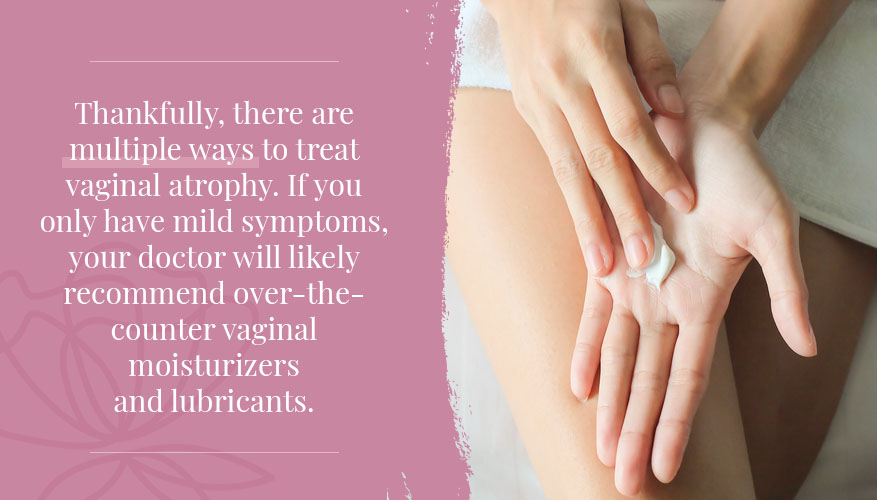
Vaginal moisturizers are applied every few days with an applicator to relieve overall vaginal dryness. Moisturizers are a good choice if you experience vaginal dryness all day and night, not just during sex. They release water and create a moist film over vaginal tissue, and they can also help rebalance the pH of your vagina. Your vaginal wall will absorb the product that it needs and shed the rest, so you might want to wear a liner or pad to catch the discharge.
Vaginal lubricants are specifically designed to be used during intercourse and can make it more comfortable and enjoyable even when you’re not dealing with GSM. Silicone-based lubes last longer, but they also compromise the silicone coverings of condoms and intimacy products. If you want to use those, opt for a water-based lubricant instead.
Shop All Intimate Self Care Products
If your symptoms are more severe, or don’t resolve with vaginal moisturizers and lubricants, then your doctor may prescribe some form of estrogen replacement therapy. Estrogen can be taken topically or orally and works to improve the elasticity and moisture of your vagina.
Topical estrogen options include inserting a vaginal estrogen ring or tablet, or applying a cream inside the vaginal canal using an applicator. Vaginal rings only need to be replaced once every couple of months. For the creams and tablets, your doctor may have you start using them daily and then reduce it to only one to two applications a week once symptoms improve. Topical estrogen treatments do not increase your risk of cancer and don’t treat any other symptoms of menopause, such as hot flashes.
Oral estrogen is ingested in pill form and used to provide menopause relief from symptoms, such as hot flashes and vaginal dryness. Prolonged use of it heightens the risk of certain cancers, so your doctors won’t prescribe it if you have a history of cancer. If your doctor decides that topical estrogen use is appropriate for you, they might prescribe progesterone in addition to estrogen in pill or patch form. Women taking both hormones may sometimes experience vaginal bleeding after menopause. While this is not uncommon, they should still contact their doctor just to be sure, as abnormal vaginal bleeding can be an early sign of endometrial cancer.
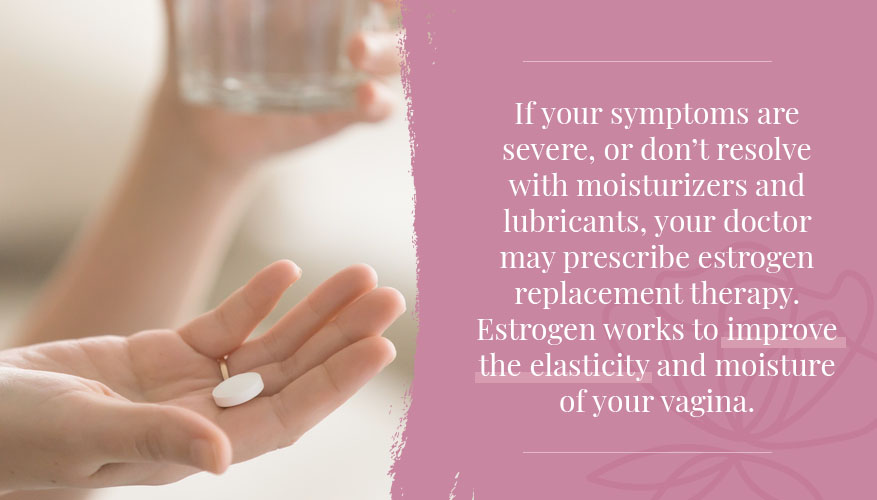
Steps to preventing vaginal atrophy
There are certain lifestyle changes that you can make to help prevent vaginal atrophy from occurring, or to help ease its symptoms if you’re experiencing it. Wearing cotton underwear and loose-fitting clothes improve air circulation around the genitals and makes you more comfortable. On the other hand, tight clothing made of non-breathable fabrics, such as polyester, traps sweat and bacteria and makes your genitals an ideal breeding ground for infections. Cotton underwear and clothing can make a big difference, especially during workouts and other sweaty scenarios.
Regular sexual activity — either on your own or with a partner — enhances blood circulation to the genitals and encourages your vagina to create natural moisture. While sexual activity doesn’t affect your estrogen levels, it does help keep your sexual organs healthier through that blood circulation. Using over-the-counter lubricants can also be a huge help if you experience discomfort during sex. Many women need a little extra help achieving their ideal level of lubrication.
Experiencing Peeing During Sex? Find Solutions Here
How to clean the vaginal area when you have vaginal atrophy
Be extremely careful with cleaning in and around your vagina. While certain feminine products such as douches may be popularized by celebrities, the truth is that your vagina is a self-cleaning organ that doesn’t need to be washed out. Putting any substance up there, including water, disrupts the bacterial and acidic balance of your vagina and can potentially lead to complications.

Your vulva — the external area around the vagina that includes the clitoris and labia — does need to be washed with water once a day. If you’d like, you can use a mild, fragrance-free, colorless soap, but it’s not necessary. It’s also a good idea to wash the area between your vulva and anus as well as your anus, working front to back to minimize the spread of bacteria. You should avoid washes that are scented or contain harsh chemicals and opt for safe and natural feminine washes.
A little bit of a smell around your vagina is totally normal and doesn’t mean that anything is wrong. Pretty much no one else will be able to smell it except for your sexual partner when they get up close and personal with the area. You don’t need to contact your doctor unless the smell is especially pungent and unpleasant. (To learn more about menopause and body odor, check out our guide.)
Understanding Menopause and Body Odor
Whether you need vaginal moisturizers or incontinence liners, we’ve got everything you need to manage menopause with grace. Get free shipping on all Sofia & Grace orders over $40 and set up recurring deliveries so you never forget your products!
Image Credits
Dusan Petkovic/shutterstock.com
sub job/shutterstock.com
New Africa/shutterstock.com
Laboko/shutterstock.com
Boszyy Artist/shutterstock.com
fizkes/shutterstock.com